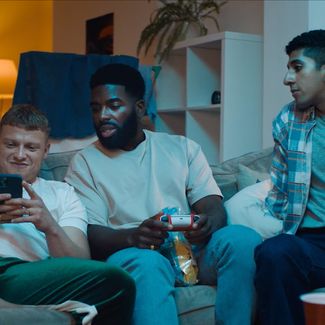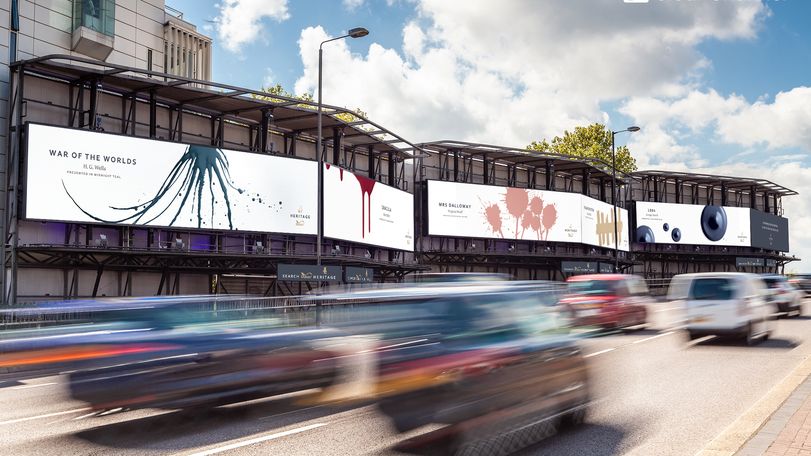
Ogilvy's Flavours of Strategy
Natalie Chester, strategy director, and Ryan Thomson, senior strategist, dive into the thinking behind two of its famed campaigns
21 October 2025
There’s strategy that nods along with the brief, and then there’s strategy that picks the brief up, turns it upside down, and asks the uncomfortable questions. Ogilvy is a creative powerhouse with a rich history of doing exactly that and isn’t taking its foot off the gas.
Putting work together that is both eye-catching and thought-provoking requires not only creative rigour but a unique strategy that really tackles the underbelly of cultural issues, whether confronting deeply-rooted misogyny or decoding the class divide on bookshelves.
With campaigns like ‘Say Maaate to a Mate’ and Dulux Heritage’s Collections, the agency again proves strategy isn’t about playing it safe. It’s about leaning into the chaos, and finding a way through it that people actually want to follow.
Natalie Chester, strategy director, and Ryan Thomson, senior strategist, give a deep-dive into the strategical lens of these campaigns - how the work came about, the unlike any other steps that were taken, and whether or not it paid off (spoiler, it did).
‘Say Maaate to a mate’
The agency's work with the Mayor of London, Sadiq Khan, looked to tackle misogyny in a period of time where it was rife and seemingly not enough was being done to tackle it. ‘Say Maaate to a Mate’ aimed to empower men and boys to say ‘Maaate’ to their friends to challenge widespread misogyny against women and girls nationwide.
“Like 97 per cent of women in the UK, I’ve experienced misogyny,” begins Natalie Chester, strategy director at Ogilvy UK, speaking at The IPA Effectiveness Conference.
“The impact of unchecked misogyny is far more pronounced. On 3 March 3 2021, Wayne Couzens abducted, raped, and murdered Sarah Everard. Three days prior, he had been reported for indecent exposure. Two years earlier, grossly misogynistic messages were found on his phone - jokes about rape and sexual assault. This is what the Home Office calls the escalating pattern of violence.
"To be clear: not all misogyny results in violence, but most violent acts begin with misogyny. So, at its root, male violence against women starts with words.”
The work, she explains, was rooted in an insight found from government data, showing that while most men wanted to call out misogynistic behaviour, 17 per cent didn’t know how. It also found - and arguably surprising so - that men aged 18-to-34 were the least likely to intervene and instead stay silent.
“To find out how to break this silence, we conducted a large-scale study involving ethnography, online language analysis, and video diaries,” Chester continues. “This research led us to an insight nobody wanted to hear: men were putting their mates before something more important.”
“It was a messy, complicated truth. For many of the men we spoke to, confrontation felt too antagonistic. Nobody wanted to be the morality police, so they stayed silent - paralysed by the prospect of being ostracised from their group.
Forced to confront this difficult reality, we made an unorthodox strategic choice. If we had any chance of being effective, we needed a strategy that worked with the dynamics of male relationships — not against them.”
While on the surface the obvious thing may have been to reprimand the men’s actions, Ogilvy UK took a creative solution that looked to change behaviour effectively: a single word.
The science of how behaviours spread, according to Chester, shows people won’t adopt what are deemed to be ‘risky behaviours’ if they only hear them from a single source. The campaign, therefore, looked to eradicate the risk of meaning flying over audiences’ heads.
“We enlisted a host of unexpected voices, including UK comedian Romesh Ranganathan to showcase that when somebody says something inappropriate to a woman it requires a “mate.”
"As the person who defended the insight and developed the strategy, I found myself in the eye of a high-profile media storm,."
Natalie Chester, strategy director at Ogilvy UK
The reaction to the campaign was explosive.
“As the person who defended the insight and developed the strategy, I found myself in the eye of a high-profile media storm,” Chester reveals. “It felt like every hour brought a new headline - and each one felt like a punch in the face. I felt the weight of every criticism. Headlines like: ‘This campaign will do nothing to stop sexual violence and misogyny’, and ‘The single word that can really work is prison’.
After debates in a media storm that lasted for weeks, it became clear that the campaign divided opinion - some critics dismissing it as ineffective, while others praised its progressive approach. So much so, the work amassed an earned reach of 3.5 billion, and drove the conversation around tackling misogyny in 2023 by 43 per cent - three times higher than the high-profile Russell Brand scandal that same year.
“This conversation did something important: it propelled 'Mate' into the public lexicon. We saw men discussing it across social channels. Critically, it helped men feel more confident; most importantly, it turned 18-to-34-year-old men in London from the least to the most likely to step in.
Putting such a campaign together, admits Chester, was, at times, like “walking through fire, but to break the silence, “we had to start a conversation.
And they did.
Dulux's 'Heritage Editions'
For most people, when they think of Dulux, the image of a large Old English Sheepdog - the ‘Dulux dog’ - springs to mind. Its Dulux Heritage arm, however, looked to create something much more eye-catching in unexpected ways.
The work reimagined the covers of 12 literary classics to create a new way to choose colour, from 'Little Women' to' Dracula' to 'War of the Worlds'. Each book’s emotional storyline was analysed and matched to colours that evoke the same mood and feelings.
While certainly an aesthetic piece of work, 'Heritage Editions' does much more in tackling what most tread on eggshells around: the class barrier.
“The elephant in every room is class,” begins Ryan Thomson, senior strategist at Ogilvy UK, speaking at The IPA Effectiveness Conference. “It’s something we all feel, all sense, but rarely talk about openly - especially in Britain. If 'Dulux Heritage' was ever going to succeed in the luxury sector, it’s a conversation we had to face head-on.”
The agency found that Dulux, as a brand, was seen as “reassuringly middle-class” - the people’s champion of paint, but in the luxury sector, competitors like Farrow & Ball had “mastered the codes of cultural sophistication” and were the premium paint of choice.
“Breaking through the class barrier is arguably one of the hardest things a brand can do - let alone a paint brand,” continues Thomson. “What really unlocked this brief for us was immersing ourselves in the anthropological work of Kate Fox, Mike Savage, and Sam Friedman. What we found was that while wealth can be acquired, the two most powerful signifiers of class in Britain today are education and elocution.
“Our eureka moment didn’t come in a brainstorm or a late-night meeting. It came when I was standing in a couple’s living room, looking at their bookshelf. I saw a row of Penguin Classics - carefully curated, proudly displayed, and as our ethnographic study progressed, I saw it again and again. Books were doing the job of expensive wallpaper - acting as visual narratives about identity. Visitors were invited to read them - not just literally, but socially.”
Such an insight made the campaign rich with both colour and emotion; the books, in turn, weren’t just marketing materials but curators of conversation to be proudly displayed on shelves.
The results of 'Heritage Editions' didn’t only sell paint (which grew by almost 45 per cent year-on-year during the campaign period), but it also saw an 11 per cent rise in brand awareness, and helped Dulux Heritage to overtake Farrow & Ball as the top brand in the category for 'meaningfulness', claims Thomson.
“By learning to spot signals - not just listening to statements - we were able to create a place for Dulux Heritage in the hearts and homes of middle-class Britain. With this campaign, planning achieved the seemingly impossible,” he concludes.








